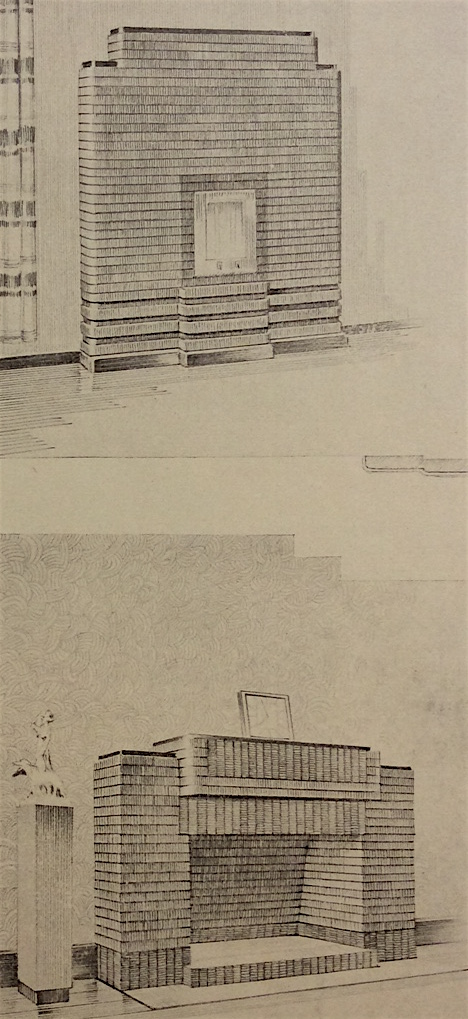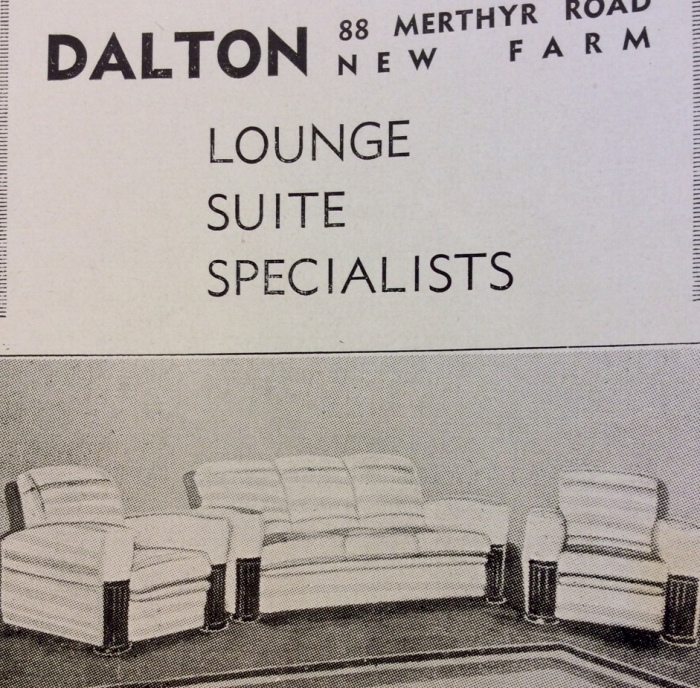
By the late 1930s, the modern style we now know as Art Deco was enjoying popularity in Queensland. The 1938 edition of The Home Builders Annual was filled with advice for homeowners eager to seize on the spirit of modernity.
The John Oxley Library at the State Library of Queensland holds an original copy of the annual, a Brisbane publication forged in collaboration between local industry associations representing builders, timber merchants, joiners, painters and plumbers.
This post takes a look inside the annual at some of the articles and advertisements aimed at those who aspired to the Art Deco style.
Modern architecture
The yellow brick house featured on the colourful front cover of the annual epitomised streamline moderne design with its emphasis on simple horizontal and vertical lines, and its curved deck and porthole garage windows which were reminiscent – albeit very modestly – of the great ocean liners.

Inside the magazine, readers could access the floor plan of this compact, split-level house which consisted of two bedrooms, kitchen, living room, dining room, bathroom, deck and single garage.

While the plans above were designed for “a person of moderate means”, the annual also featured an example of more lavish Art Deco architecture in the form of Chateau Nous, located in the dress circle of Ascot. Designed by architect Douglas F.W. Roberts for Dr George Stewart and his wife Eileen, Chateau Nous remains one of Brisbane’s most renowned Art Deco homes today with its plaster walls, horizontal banding, curved edges, chevron motifs and leadlight windows.

To help the homeowner achieve modern architectural finishes, the annual included illustrated advertisements for suppliers of glass bricks, plaster ceilings and plywood wall veneers.



Modern bathrooms
In one of the annual’s feature articles, the bathroom was singled out as a blank slate for realising the vision of modernity, free from the strictures of the past:
Modern the bathroom must be! – for it has no precedent in the lives and customs of the people of other lands. There are no period styles to copy. This truth becomes the more obvious when you are reminded that the individual bath, as distinguished from the public baths of ancient times, is little more than a generation old.
In the modern bathroom, form and function coalesced to create “a beautiful and integral part of the home”. Recessed rather than free-standing baths meant that “the dropping of soap and odds and ends, which can be retrieved only by lying flat on the stomach, is a thing of the past.” Shower curtains were celebrated for “minimising the splashing of water on to the floor, thus reducing the workload of the housewife.” Ball and socket shower heads fixed to the wall permitted “the shower to be turned in any direction on the body without wetting the head – an important consideration in the summer months when it is desired to have a shower before retiring.”

The influx of new building materials such as cement sheeting and pressed metal sheeting put modern design in reach of the average home builder and renovator. One of the most striking images in The Home Builders Annual was Wunderlich’s double-page colour advertisement for Duralite asbestos-cement sheeting, marketed as a more economical option than ceramic tiles. The green, black and cream colour scheme, pedestal basin and streamlined bath were all hallmarks of Art Deco design, accentuated by stylishly-clad mother and child.

Other suppliers also vyed for the bathroom renovation market by appealing to a modern sensibility. United Metal Industries offered its own cheaper alternative to ceramic tiles in the form of Porcelux, a metal panelling product that promised to bring modern colour to the bathroom.

Barker and Co. advertised Glazene, sheeting that had been enamelled to create a marble-like finish, without the price tag of marble.

Modern interior accents
Despite being published in the warm climes of Queensland, the annual included a feature article on electric and gas fireplaces, promising “cosy comfort” on “dull, rainy days”, especially when combined with “a good book” or “a cheerful companion”. Accompanying the article were drawings of modern fireplaces that would suit any Art Deco interior with their stepped silhouettes and horizontal banding, constructed from Wunderlich Brickettes available in red, brown, chocolate, buff, purple and “blended autumn tints”.

Another feature article encouraged readers to select furnishings “with an eye to harmony as an integral part of the whole home plan.” Mirroring Art Deco’s emphasis on symmetry and balance, scale and proportion were identified as important criteria when purchasing furniture. This ditty was offered as a memory jogger for shoppers:
The smaller the room, the less design,
The more plain colour, and simple line.
According to the article, the shift to modern design meant “out-of-date and old cumbersome pieces of furniture” no longer had a place in the home, superseded by “the new designs with their clear-lacquered or polished surfaces of delightful patterned veneer.”

Advertisements for Brisbane-based manufacturers and suppliers of modern furniture were dotted through the annual, including household names such as Coupon, Trittons and Dalton.



Although The Home Builders Annual catered for a range of tastes, the prevalence of feature articles and advertisements reflecting the modern aesthetic indicates just how fashionable Art Deco design had become in Queensland by the late 1930s.
**If you enjoyed this article and would like to keep up-to-date with similar stories as they are published, please like the Queensland Deco Project Facebook page or subscribe to follow the blog**
Image acknowledgements
All images by Queensland Deco Project, 2017.
References
Hampson, Alice. “Chateau Nous” in Brisbane Art Deco: Stories of Our Built Heritage. K.Wilson (ed.), Jubilee Studio, Brisbane, 2015.
The Home Builders Annual. Penrod Publications, Brisbane, 1938. Item held at John Oxley Library, State Library of Queensland.
Categories: Advertising and graphics, Architecture, Collections, Interior design
It’s a delight to see a Brisbane related Art Deco article, thank you.
LikeLiked by 2 people